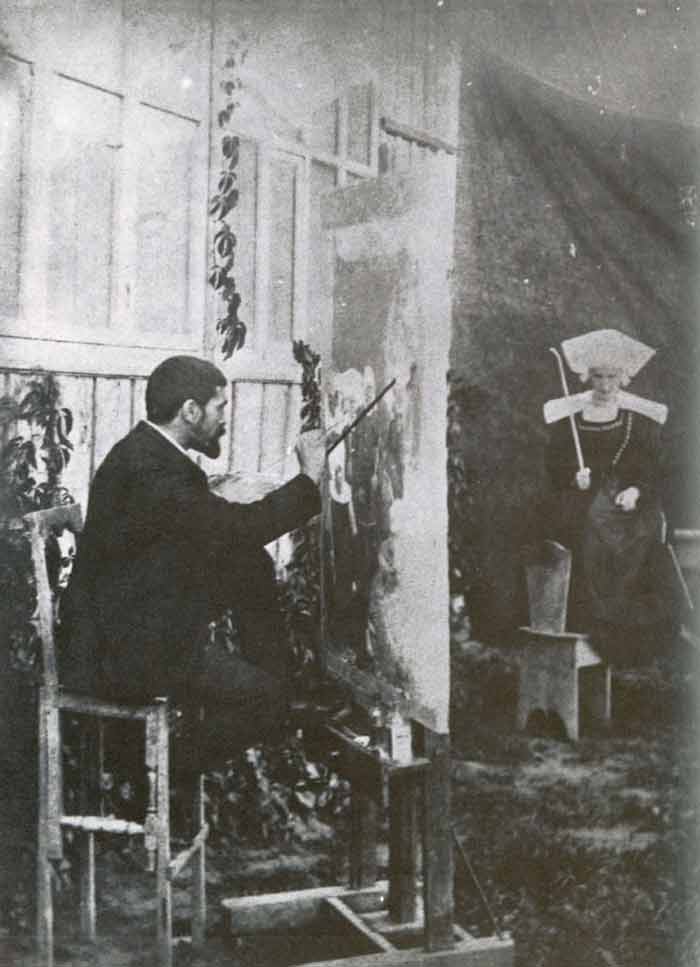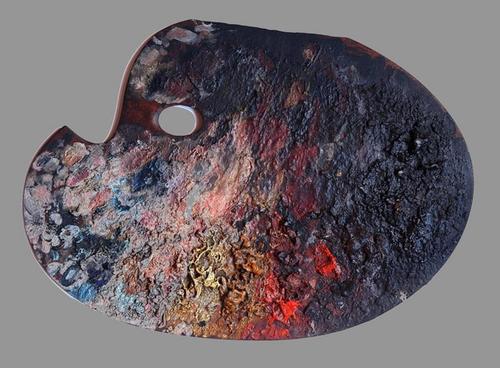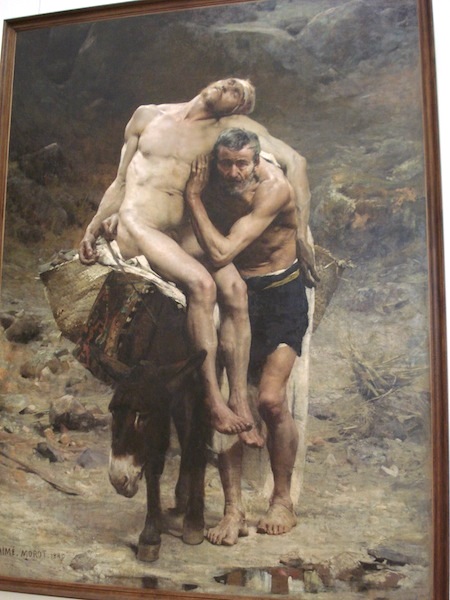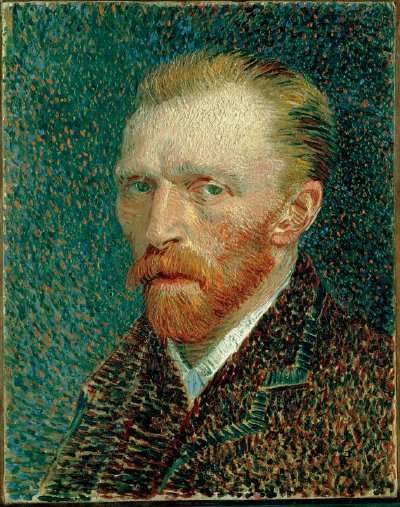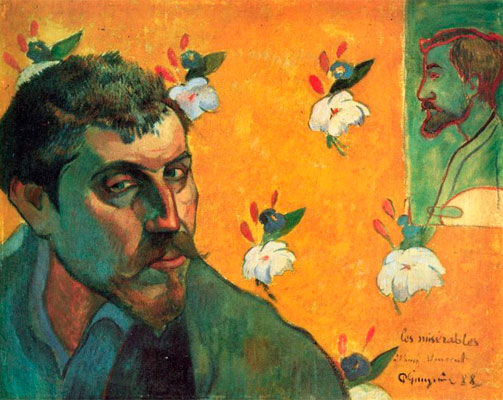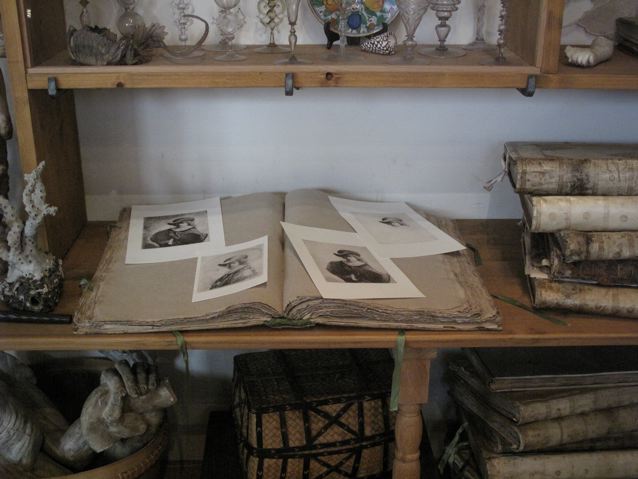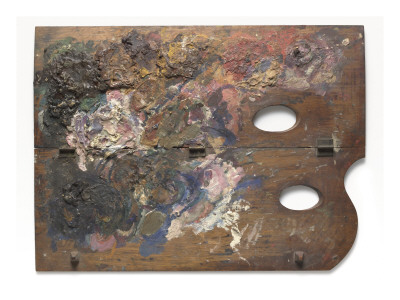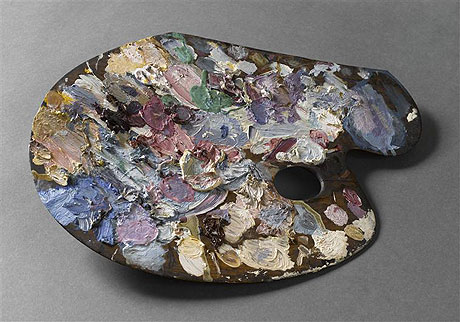On 1 Dec, 2011 With
Dagnan-Bouveret’s Palette Palette: Cremnitz white Cobalt violet Cobalt blue Ultramarine Emerald green Cadmium colors Mars yellow Venetian red 3 different shades of rose madder: light, medium and deep Burnt sienna Mars violet Ivory black Dagnan-Bouveret was one of the leading French artists of the academic school. He was born in Paris, the son of a tailor, and was raised by his grandfather after his father emigrated to Brazil. Later he added his grandfather’s name, Bouveret, to his own. From 1869, he studied at the Ecole des Beaux-Arts under Alexandre Cabanel and Jean-Léon Gérôme. In 1873, he opened his own studio with a fellow student Gustave-Claude-Etienne Courtois. From 1875, he exhibited at the Salon, where in 1880 he won the first-class medal for the painting An Accident, and…
Read More
On 28 Nov, 2011 With
Léon Bonnat’s Palette Prussian blue Cremnitz white Naples yellow Yellow ochre Light red Vermilion Alizarin crimson Burnt sienna Ivory black Bitumen (Bonnat only used this color for glazing) Bonnat’s medium: 1 part Courtai siccative and 1 part turpentine. Bonnat used this medium in the shadows only. Support: White oil ground
Read More
On 26 Nov, 2011 With
Aimé Morot’s Palette Aimé Morot (1850–1913) was a French painter. Morot was born in Nancy, where he studied under a drawing master named Thierry. He later attended the atelier of Alexandre Cabanel in the Ecole des Beaux-Arts in Paris, but left after only two weeks to continue his studies independently. During this period he spent much of his time studying animals in the Jardin des plantes, and was later to become famous for his paintings of horses, lions and bulls. Despite his lack of attendance at the École, he won the Prix de Rome in 1873. The subject given that year was the Babylonian Captivity. The prize-winning painting is currently in the collection of the École des beaux-arts in Paris, and can be viewed on request. Morot married the daughter of Jean-Léon Gérôme….
Read More
On 22 Nov, 2011 With
Vincent van Gogh’s Palette Yellow ocher Chrome yellow Cadmium yellow Chrome orange Vermilion Prussian blue Ultramarine Lead white Zzinc white Emerald green Red lake Red ocher Raw sienna Black
Read More
On 20 Nov, 2011 With
Paul Gauguin’s Palette Paul Gauguin was a leading Post-Impressionist artist, painter, sculptor, printmaker, ceramist and writer. Prussian blue Cobalt blue Emerald green Viridian Cadmium yellow Chrome yellow Red ochre Cobalt violet Lead white Zinc white
Read More
On 3 Nov, 2011 With
Gérôme’s Palette Jean-Léon Gérôme was a French painter and sculptor in the style now known as Academicism. Lead white Cadmium yellow Yellow ochre Mars yellow Vermilion Light red Burnt sienna Rose madder Purple lake (laque pourpre) Emerald green Mineral blue* Cobalt blue light Ivory black *According to Vibert (La science de la peinture, p. 288), mineral blue (bleu minéral) is a pigment with the same chemical composition as Prussian blue.
Read More
On 19 Oct, 2011 With
Van Gogh’s palette Why preserve an artist’s palette? The daubs of raw pigment or the mixes left in position can be an intriguing index to the working method and the mind of the artist. And most, once the status of art had been elevated above the realms of mere craft, would paint themselves palette in hand. Where and how colour is laid can convey emotion, psychology, religious significance. “The whole value of what you are about” wrote John Ruskin in his Elements of Drawing, first published in 1857 “depends on colour. If the colour is wrong, everything is wrong: just as, if you are singing, and sing false notes, it does not matter how true your words are.” In a letter to…
Read More
On 9 Sep, 2011 With
The former residence of Dutch painter Rembrandt van Rijn has been restored to its former glory; the way it was when Rembrandt lived here in the 17th century. Everything’s there: his studio, his living quarters and his art. You’ll most definitely be surprised by his curiosity cabinet. When Rembrandt filed bankruptcy in 1656 an inventory was made and his valuable possessions were sold. Thankfully the list with Rembrandt’s inventory was saved and that’s how you can get a representative glimpse on Rembrandt’s life today. Besides the rooms of the house, the Rembrandt House Museum shows: Paintings by Rembrandt’s contemporaries, his pupils and his teacher ‘Pieter Lastman’. Rembrandt’s graphical work: The museum harbors a large collection of 260 Rembrandt etchings (in…
Read More
On 5 Sep, 2011 With
Palettes of Famous Artists Gauguin believed in: “Pure colour! Everything must be sacrificed to it.” Yet, overall, his tones were muted, and quite close together. Marion-Boddy Evans draws our attention to a portable palette found in his painting studio after he died, from which it would appear Gauguin didn’t lay out his colours in any particular order. Nor does he seem to have ever cleaned his palette, instead mixing fresh colours on top of dried-up paint.
Read More
On 1 Sep, 2011 With
Palettes of Famous Painters Of Gustave Moreau, the art critic Charles Blanc, whose writings (still essential reading) and triangle based colour-system are considered the most influential texts on colour theory, wrote in Le Temps, 1881: “One would have to coin a word for the occasion if one wished to characterise the talent of Gustave Moreau, the word colourism for example, which would well convey all that is excessive, superb and prodigious in his love for colour. … It is as if one were in the presence of an illuminator who had been a jeweller before becoming a painter and who, having yielded to the intoxication of colour, had ground rubies, sapphires, emeralds, topazes, opals, pearls and mother of pearl to…
Read More


